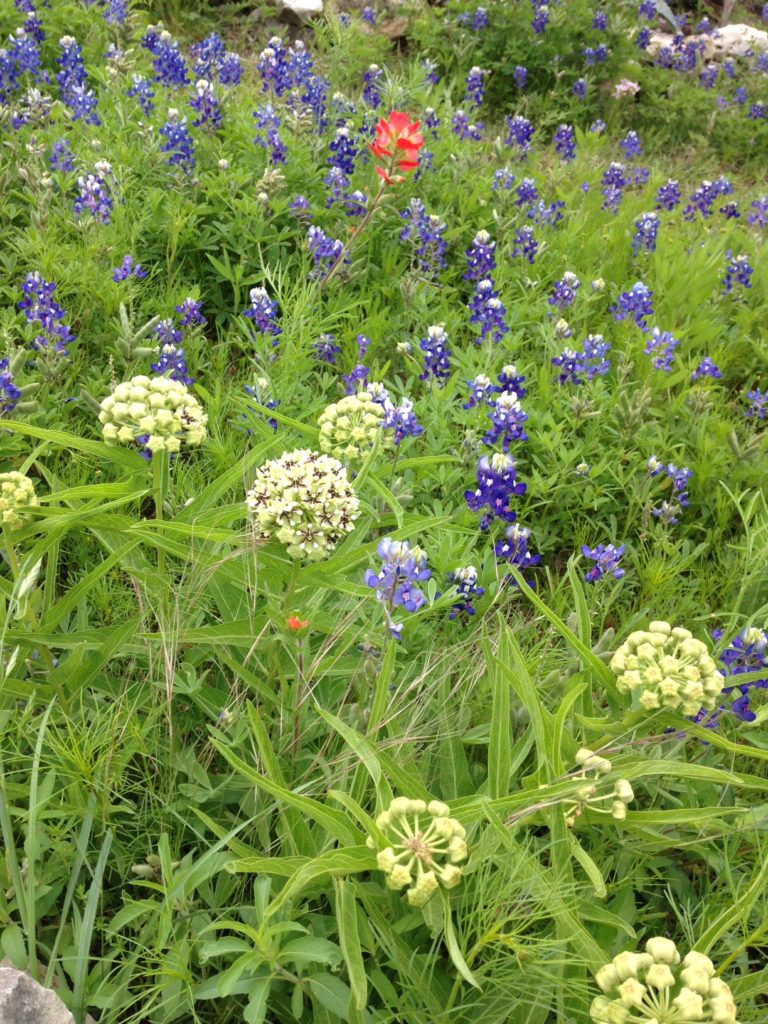

In Central Texas when we think about wildflowers we always think about our
beloved bluebonnets. No doubt about it, the bluebonnets are having a fabulous
showing this year. My yard has the thickest batch ever 33 years after we first
aimlessly threw out bluebonnet seeds on our patch of hill country soil. Children
who had their first bluebonnet photos in our yard are now having their own
children who squirm while Mom and Dad try to get them to pose.
But sooner or later bluebonnets fade and evolve in to dried up brown plants that
we wait to mow down until the last of the dry seed pods have spilled their seeds
for next year. Not to worry, however, as the bluebonnets fade there are variety
of other wildflowers, some not so well known, that make for a vibrant display.
Indian paintbrush is also showy this year. It is sometimes hard to get started, and
transplanting may kill it, so folks with this coral reddish paint-brush style flower
on their property should consider themselves lucky.
Also common along the roadsides are the colorful pin-wheel like Indian Blanket,
also known as Firewheel. They generally bloom after the bluebonnets and add
color to the yard as the bluebonnets fade. They are very tolerant of heat and dry
conditions.
In mid to late April be on the lookout for milkweed along the roadside. Milkweed
is absolutely crucial to the monarch butterfly as it is the only food source for the
monarch butterfly caterpillar. A common form in Central Texas is the antelope
horn. (see photo). Monarch numbers have been declining due, in part, to
pesticide use in agriculture, so there has been a growing movement to encourage
growth and protection of the milkweed habitat to ensure that we don’t lose our
beloved monarchs as they follow migration paths to their winter home in Central
Mexico.
For more information about Texas Wildflowers checkout this article about the
“Texas Top 20” from the Lady Bird Johnson Wildflower Center:
Written by Terri Knox, RN, CDE
